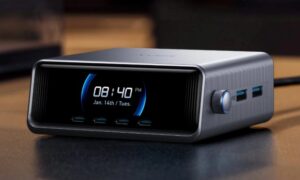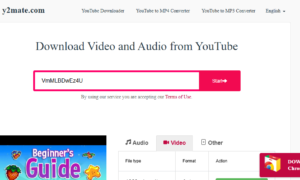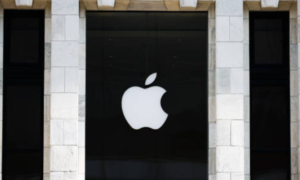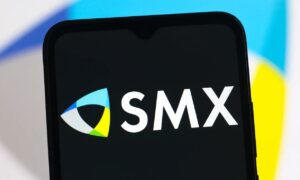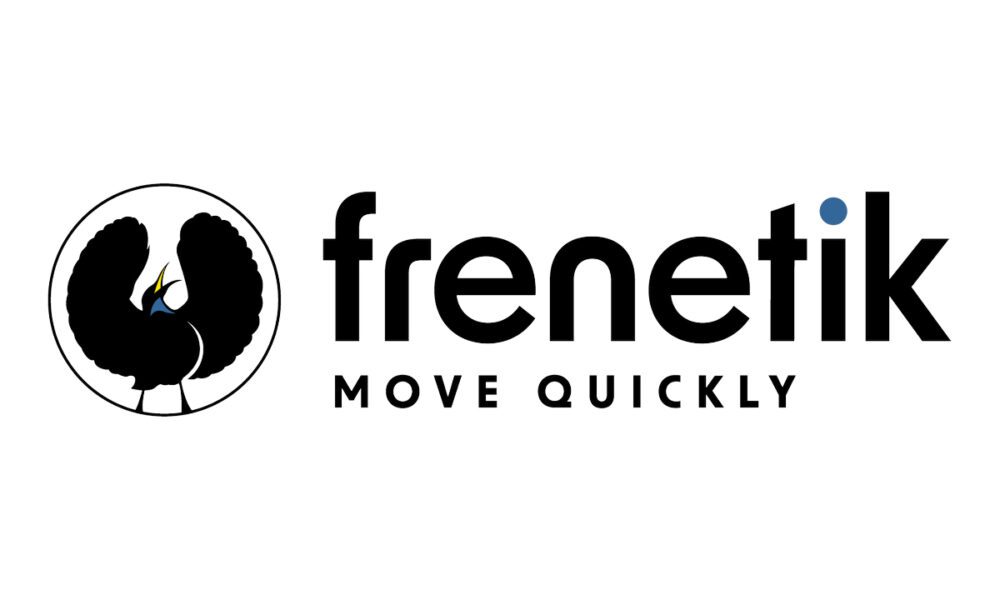You might be surprised to learn that your MacBook does not, in fact, offer HDMI input capabilities. While you can easily connect your MacBook to an external display or TV using an HDMI cable, it’s not designed to serve as a monitor for other HDMI-equipped devices.
This revelation could prompt you to question Apple’s choice of design limitations and wonder how you can still accomplish your HDMI input needs. To satisfy your curiosity and provide some potential solutions, let’s explore this topic further.
What Does HDMI Inputs Mean?
While it’s true that your Macbook Pro or Air doesn’t have a direct HDMI input, understanding HDMI inputs and how they interface with your device can help you find the right adapters and solutions for your connectivity needs.
HDMI inputs are standard on many multimedia devices, allowing high-definition video and audio signals to be transmitted over a single cable. For your Macbook, you’ll likely need an adapter to connect an HDMI cable to the Thunderbolt or USB-C ports, depending on your model.
For instance, an HDMI to Thunderbolt 4 adapter could work for your Macbook Pro. However, bear in mind that most USB-C to HDMI adapters are primarily designed for video output.
For specific Macbook Air models like A2179, you’ll need an adapter to connect HDMI to Thunderbolt 3 ports. Older Macbook Air models may pose a challenge, requiring suitable adapters to connect to HDMI or VGA projectors.
Macbook Models Overview
Let’s now turn our attention to the variety of MacBook models and their specifications. You’ll see differences in the MacBook Air’s light and portable design compared to the more powerful and versatile MacBook Pro.
We’ll also compare different models, highlighting the unique features and potential limitations of each, especially in relation to HDMI input.
Macbook Air Specifications:
Despite the HDMI input capabilities, the specifications of the MacBook Air, particularly the M1 model, offer a comprehensive overview of the device’s high performance and functionality. As a member of the MacBook family, it’s designed to deliver a seamless, efficient user experience.
You’ll find that the MacBook Air offers:
Hardware specifications:
- M1 chip, providing high computing power
- Thunderbolt/USB-4 ports for versatile connectivity
Software capabilities:
- MacOS Big Sur, the latest operating system
- Support for a wide range of applications
These features make the MacBook Air a powerhouse for both personal and professional use. Whether you’re browsing the web, running complex applications, or connecting to external devices, you can rely on the MacBook Air’s robust performance.
Macbook Pro Features:
Diving into the realm of MacBook Pro, you’ll find that its features, just like other MacBook models, are tailored for high performance, albeit with a few connectivity considerations to bear in mind. For instance, the MacBook Pro (Retina) lacks direct HDMI input, requiring an HDMI to Thunderbolt 4 adapter for the same. Adapters are key for connectivity, but not all are created equal.
| MacBook Pro Model | Adapter Type |
| MacBook Pro (Retina) | HDMI to Thunderbolt 4 |
| MacBook Air A2179 | Specific HDMI Adapter |
| MacBook Air (mid-2013) | Specific Projector Adapter |
Thus, it’s crucial to ensure you have the correct adapter for your MacBook model, keeping in mind that most USB-C to HDMI adapters are designed for video output, not input.
Comparing Different Macbooks
When you’re comparing different MacBook models, it’s essential to consider not just their performance capabilities, but also the types of adapters each model requires for HDMI connectivity.
MacBook Pro:
- Requires a HDMI to Thunderbolt 4 adapter for connectivity
- Doesn’t have a direct video input solution, but a video capture card and associated software are needed for capturing video
MacBook Air:
- Model A2179 may require a specific adapter for connecting HDMI to its Thunderbolt 3 port
- Using a MacBook Air mid 2013 with a projector may require finding suitable adapters considering the different port types
Understanding these differences is key to your belonging in the tech-savvy MacBook community. It ensures you’re well equipped to handle any HDMI input requirements your MacBook model might have.
HDMI and Modern Macbook Models
In the realm of modern Macbook models, you’ll typically find a lack of built-in HDMI inputs, necessitating the use of HDMI to Thunderbolt adapters to connect external devices. This shift can be confusing, but we’re here to guide you through this tech terrain.
When it comes to HDMI and modern MacBook models, it’s not always a plug-and-play situation. Most USB-C to HDMI adapters are designed for video output, which might not satisfy your specific needs. For instance, older models like the MacBook Air mid 2013 require special adapters for HDMI to Thunderbolt connectivity.
Below is a table summarizing the different needs and solutions:
| Macbook Model | Solution |
| Modern Macbook | HDMI to Thunderbolt adapter |
| MacBook Air Mid 2013 | Specific HDMI to Thunderbolt adapter |
| Macbook Pro | HDMI capture device or remote desktop software |
Using a MacBook Pro as a monitor may require HDMI capture devices or remote desktop software. Remember, belonging in the tech community means staying informed, adaptable, and always ready to learn new ways of doing things.
Apple’s Transition From HDMI
As we navigate the landscape of HDMI connections in MacBook models, it’s important to understand why Apple moved away from traditional HDMI ports to newer alternatives like Thunderbolt and USB-C. This transition didn’t happen overnight. It was a deliberate move by Apple to streamline the design of their machines and to improve the overall user experience.
Here’s a quick rundown of the changes:
- Transition to Thunderbolt and USB-C
- Thunderbolt ports provide faster data transfer rates and better video output than HDMI.
- USB-C, on the other hand, is versatile; it can handle power, data, and video, all through one port.
Need for adapters:
- As a result of this transition, you’d often need an adapter to connect HDMI devices to your MacBook.
- Most of these adapters are designed for video output, hence, for video input, you’d need a capture card.
Utilizing Macbook’s Thunderbolt Port
Let’s now turn our attention to understanding the function and potential of your MacBook’s Thunderbolt port.
With the right adapters, converting Thunderbolt to HDMI input becomes a feasible task.
However, you must also be aware of potential port limitations that could influence your connectivity options.
Understanding Thunderbolt Port
Before diving into the specifics, it’s crucial to know that your MacBook’s Thunderbolt port offers a solution to HDMI input needs. Your MacBook mightn’t have a direct HDMI input, but the Thunderbolt port provides a workaround. This port is versatile and can accommodate a range of connections, including HDMI, through an adapter.
Here’s a brief rundown:
Thunderbolt port:
- Connects to HDMI: You can connect your MacBook to an HDMI device using a Thunderbolt adapter.
- Requires additional hardware: For video input, you’ll likely need a video capture card and appropriate software.
Understanding the capabilities of the Thunderbolt port is essential to maximize your MacBook’s connectivity options. Despite the lack of direct HDMI input, your MacBook’s thunderbolt port can bridge the gap.
Thunderbolt to HDMI Conversion
Having grasped the functionality of your MacBook’s Thunderbolt port, it’s now time to explore how a Thunderbolt to HDMI adapter can potentially provide a solution for HDMI input needs.
This thunderbolt to HDMI conversion isn’t just about plugging in an adapter. You need to ensure it’s compatible with your MacBook’s port and viable for your needs. You might also need additional software to establish the connection. So, it’s wise to seek advice from those who’ve navigated similar challenges.
Do your research, gather recommendations, and find the best adapter for you. Remember, you’re not alone in this technological journey. Like you, many others are seeking to belong to the community of successful MacBook HDMI users.
Potential Port Limitations
Dive into the intricacies of your MacBook’s Thunderbolt port, as you consider potential limitations and challenges when trying to connect HDMI devices. While an HDMI-to-Thunderbolt adapter is a potential solution, it’s important to analyze its viability. Most USB-C to HDMI adapters are designed for video output, but for DRM-protected content, you might need a capture card.
You’ll face unique challenges depending on your MacBook model. For instance:
For MacBook Air model A2179, you’ll need to:
- Identify the right adapter for the Thunderbolt 3 port
- Seek specific model A2179 recommendations
- For MacBook Air mid 2013, finding suitable HDMI or VGA adapters might be tough.
Adapting HDMI for Your Macbook
To adapt HDMI for your Macbook, you’ll likely need a HDMI to Thunderbolt 4 adapter, especially if you’re a Macbook Pro user seeking HDMI connectivity. This adapter serves as a bridge between your HDMI output device and your Macbook, creating a seamless connection.
However, it’s crucial to remember that most USB-C to HDMI adapters are primarily designed for video output.
In instances where you want to connect specific video sources, you might need a capture card. This is particularly applicable when adapting a Samsung player to play DVDs on your Macbook Pro. The process involves identifying the appropriate HDMI to Thunderbolt adapter that can facilitate this connection.
For older MacBook Air models, you may face challenges when attempting to connect to projectors due to the absence of a direct HDMI input. Again, the right adapter is your saving grace.
Pros and Cons of HDMI Usage
When considering the use of HDMI for your MacBook Pro, it’s important to weigh the pros and cons associated with the various methods and adapters available.
Pros of HDMI Usage:
- Flexibility: HDMI input allows for various setup possibilities, enabling you to connect external devices to your MacBook.
- Cost-efficiency: Affordable capture devices offer a cost-effective solution with low input lag and good video quality.
Cons of HDMI Usage:
- Compatibility: You’ll need to determine the viability of your adapter and possibly seek recommendations from others who’ve faced similar issues.
- Requirement of Additional Software: A video capture card and associated software may be needed, adding to the complexity.
Understanding these pros and cons is key to making an informed decision about HDMI usage for your MacBook Pro.
Whether you need to connect video players or use your MacBook as a monitor, HDMI capture devices can be an effective solution. Consider your specific needs and the potential challenges to determine the best approach.
Alternative Connectivity Options for Macbook
In addition to considering the pros and cons of HDMI usage, it’s equally important to explore alternative connectivity options available for your MacBook. These include HDMI to Thunderbolt 4 adapters, USB-C to HDMI adapters, and using specific adapters for certain MacBook Air models.
| Connectivity Option | Description | MacBook Compatibility |
| HDMI to Thunderbolt 4 | Connects HDMI devices to a MacBook Pro | MacBook Pro |
| USB-C to HDMI | Designed for video output, may require a capture card | MacBook Pro |
| Specific Adapters for Model A2179 | Necessary for connecting HDMI to Thunderbolt 3 ports | MacBook Air Model A2179 |
| Adapters for Older Models | Connects MacBook Air mid 2013 to HDMI or VGA projectors | MacBook Air mid 2013 |
| Video Capture Card | No direct video input solution, but can be used with an external optical drive and software | MacBook Pro |
Frequently Asked Questions
Can a Mac Take HDMI Input?
No, your Mac can’t directly take HDMI input. For HDMI compatibility, you’ll need an adapter or a capture card and software. It’s not straightforward, but it’s certainly possible with the right tools.
Can I Use My Macbook as a Monitor?
Diving into the world of “Monitor Mirroring,” you can’t directly use your Macbook as a monitor. It requires video capture hardware and specific adapters, painting a slightly complex picture for your tech endeavors.
Is There HDMI in Mac?
No, Macbooks don’t have HDMI inputs. You’ll need HDMI alternatives like Thunderbolt or USB-C adapters for video output. For video input, a capture card and appropriate software are necessary.
Why Is My Mac Not Detecting Hdmi?
You’re not alone in your HDMI troubleshooting journey. Many Mac users face this issue. It’s often solved using an HDMI to Thunderbolt adapter or installing additional software. Seek recommendations and research to find your solution.
Conclusion
So, you’re out of luck if you’re hoping to use your MacBook as an HDMI input device. MacBooks only play the outbound game with HDMI, directing visuals to external screens.
But don’t fret! With a nifty HDMI to Thunderbolt adapter or a robust capture card, you can bridge this digital divide.
It’s not a perfect solution, but in the world of tech, adaptability is king. So sally forth, and conquer your connectivity conundrums!


